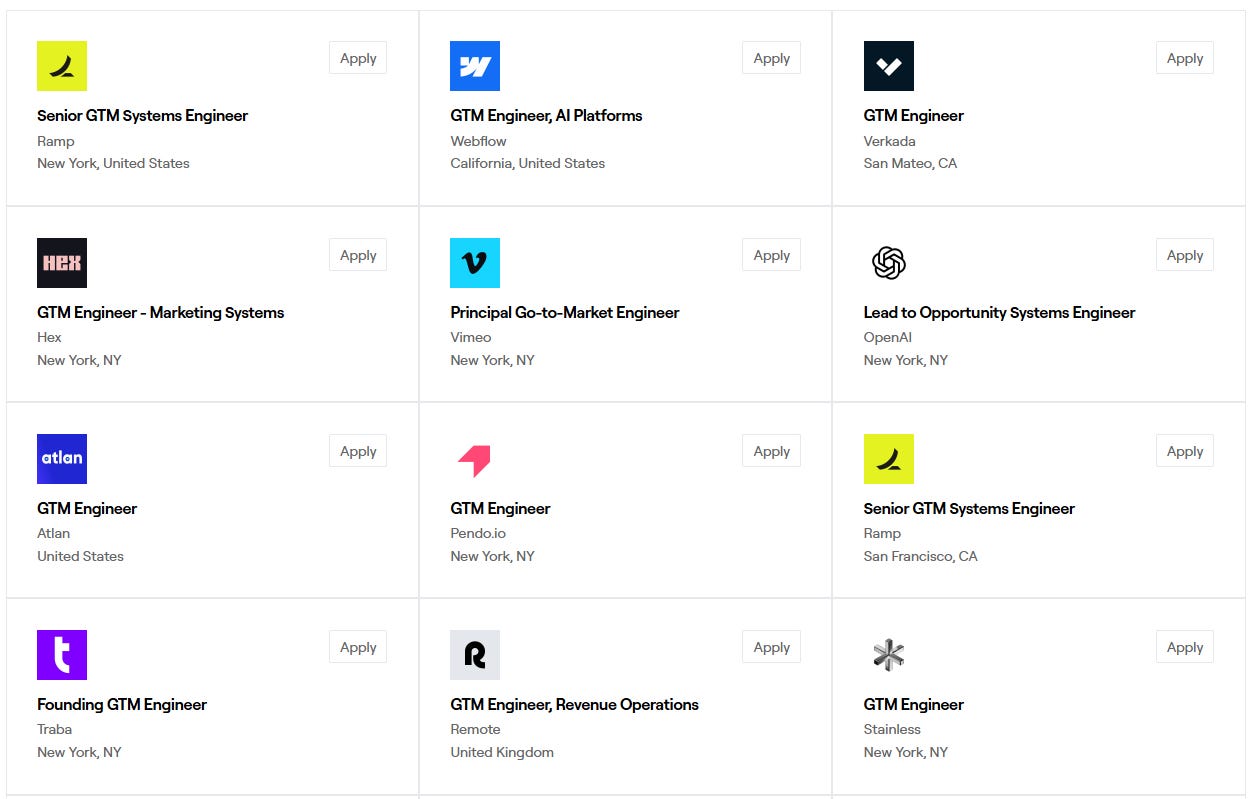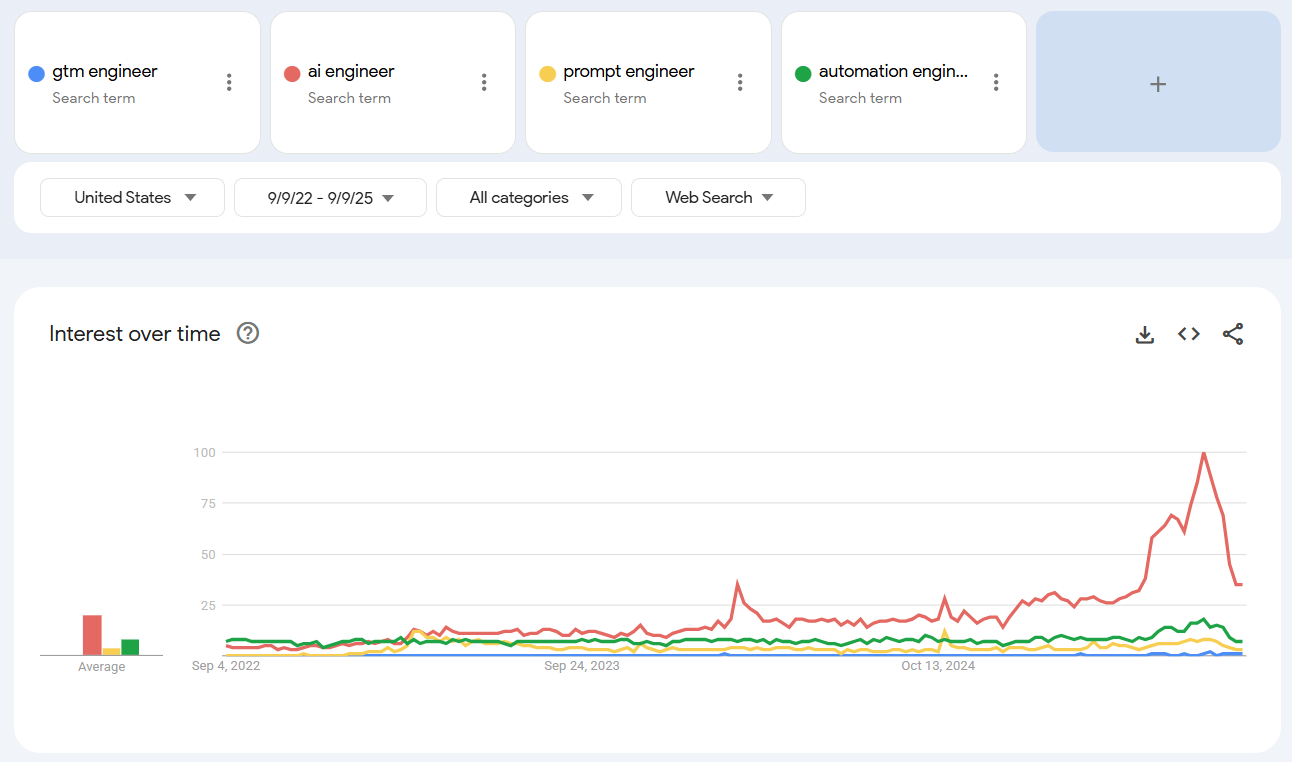Do you need a GTM engineer?
Inside the uneven rise of the hottest job of 2025

Most folks still think ZoomInfo = contact database. Not anymore.
ZoomInfo has rebuilt itself into a full Go-to-Market Intelligence platform. It doesn’t just give you data; it acts on it.
Signals come in. Outreach goes out. Pipeline moves, automatically. See for yourself and claim your free trial today.
I thought GTM engineering would be the hottest job of 2025.
The role has certainly entered the chat. There are detailed think-pieces about it. Communities for GTM engineers. Courses dedicated to it. And companies like OpenAI, Ramp and Webflow that are sprinting to hire for it.
GTM engineers – sometimes called GTM Ops, Growth Ops, AI Ops, RevOps Engineers, GTM Ops Engineers, or even Lead to Opportunity Systems Engineers – are meant to bring technology and automation to solve hard GTM problems (of which there are many!). I think of GTM engineers as people who can both identify friction points across the buying journey (ICP targeting, ICP pipeline, conversion, CAC, etc.) and then quickly run automated, 1:many experiments to eliminate them.
It’s essentially a growth hire, but focused on a primarily sales-led or sales-assisted funnel rather than a product-led one. It’s similar to Ops, but often meant to have an incentive structure tied to results. And it seems to particularly resonate in lower-ACV, lower-touch GTM motions where there’s a need for more programmatic, 1:many GTM plays.
I don’t know about you, but I haven’t met many actual GTM engineers yet. Despite the buzz, there really aren’t a lot of software companies hiring for GTM engineers, either.
I found just 45 GTM engineer job posts from the past month and 128 from the past three months. To be fair, this is up from fewer than 10 job posts per month in 2024. But I bet there were more LinkedIn posts last month about GTM engineering than actual companies hiring for it. (The data comes from Sumble, which aggregates and analyzes job posts for better account intelligence.)
Looking at June through August 2025, the stats are telling. There’s one GTM engineering job post for every 5 RevTech/MarTech job posts. One for every 14 in RevOps. One for every 35 in SalesOps. And – even more surprisingly – there’s only one GTM engineering job post for every 92 SDRs!
What’s more, the role’s popularity is a far cry from other AI-native jobs like AI engineers, prompt engineers or automation engineers. It barely registers in Google Trends.
So what gives: is GTM engineering online hype or is it still the next hot job? Here’s what I’m seeing.
👋 Hi, it’s Kyle Poyar and welcome to Growth Unhinged, my weekly newsletter exploring the hidden playbooks behind the fastest-growing startups.
1. Companies want to outsource GTM engineering before bringing it in-house.
In talking to founders and GTM leaders, there is real curiosity about GTM engineering. Folks would love to find way to automate GTM plays or unearth creative intent signals for more precise targeting.
But people are hesitant to commit to a full-time hire for something that’s untested and with unknown ROI. They don’t know whether GTM engineering will work for them, how to hire a GTM engineer, what to look for in a candidate, or where this function fits in the organization.
The path of least resistance: outsource to an agency. It’s estimated that 45% of those with a GTM engineer title are actually agencies or consultants. There are more than 120 agencies in Clay’s Solutions Partner directory alone. That’s three agencies for every new GTM engineering job opening from the past month. And there are likely countless more agencies or consultants who specialize in GTM engineering, but aren’t explicitly in Clay’s partner directory.
A small word of caution. There’s a wide range of agencies in terms of quality, speed, and cost-efficiency. Don’t skip the agency vetting process.
2. It’s extremely hard to hire a top 1% GTM engineer.
Keep reading with a 7-day free trial
Subscribe to Kyle Poyar’s Growth Unhinged to keep reading this post and get 7 days of free access to the full post archives.





